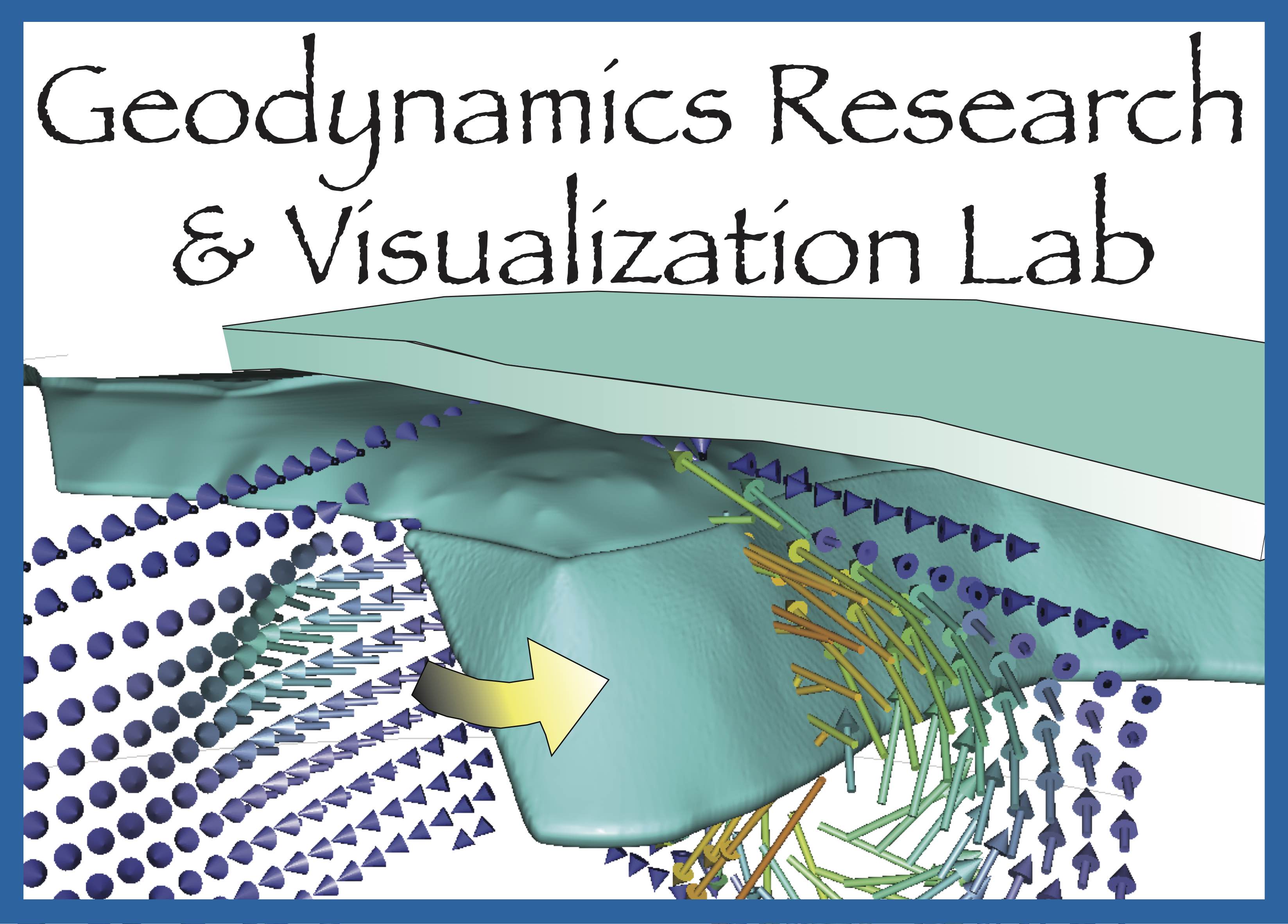Research Overview
My research addresses solid state deformation of the Earth. This can be partitioned broadly into five research areas:
(1) High-resolution 3D geodynamic modeling of plate boundaries,
(2) Mantle flow and slab window processes,
(3) Alaskan tectonics and Caribbean tectonics,
(4) High-performance computing and 3D immersive data visualization, and
(5) Optimizing numerical modeling infrastructure for complex rheological problems.
(1) High-resolution 3D geodynamic modeling of plate boundaries
I construct high-resolution geographically referenced 3D numerical models to investigate the role of flat slab subduction, continental scale faulting, slab tearing, and a non-linear rheology on lithospheric and mantle deformation at plate margins (e.g., Jadamec and Billen, Nature 2010; Jadamec, Journal of Geodynamics 2016; Jadamec and Haynie, Tectonics In Review 2016).
(2) Mantle flow and slab window processes
I am currently investigating mantle and lithosphere dynamics in subduction zones constrained by seismic observations and geochemical constraints (Jadamec, 2016a; Jadamec, 2016b; MacDougall et al., In Review; Jadamec and Fischer In Prep 2016).
(3) Alaskan tectonics and Caribbean tectonics
I am interested in the dynamics governing how plate boundaries intersect one another and three-dimensional plate boundary deformation. This leads me to places such as the flat slab subduction and slab edge in Alaska and the Caribbean plate region including the Cocos-Nazca slab gap. For example, 3D models of Alaska show that the location of Mt. McKinley, the tallest mountain in North America, is due to the modern flat slab configuration and the presence of a major intra-continental fault, the Denali fault (e.g., Jadamec et al., EPSL 2013).
(4) Optimizing numerical modeling infrastructure for complex rheological problems
Observational and experimental constraints indicate plate boundaries and rheologic boundaries within the mantle are inherently three-dimensional, characterized by lateral and vertical strength variations, as well as changes in mineralogy and water content. My models investigate how rheology in the mantle as well as anisotropic rheology in the lithosphere affect plate boundary deformation and evolution (Jadamec and Billen, 2010; Jadamec et al., 2012; Sharples et al., PEPI 2016).








